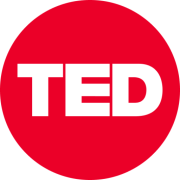https://blog.ted.com/bronwyn-king-leads-global-pledge-for-tobacco-free-finance-and-more-ted-news/
- |
The TED community has been making headlines — here are a few highlights.
Tobacco-free finance initiative launched at the UN. Oncologist and Tobacco Free Portfolios CEO Bronwyn King has made it her mission to detangle the worlds of finance and tobacco — and ensure that no one will ever accidentally invest in a tobacco company again. Together with the French and Australian governments, and a number of finance firms, King introduced The Tobacco-Free Finance Pledge at the United Nations during General Assembly week. The aim of the measure is to decrease the toll of tobacco-related deaths, which now stands at 7 million annually. More than 120 banks, companies, organizations and groups representing US$6.82 trillion have joined the launch as founding signatories and supporters. (Watch King’s TED Talk.)
The Museum of Broken Windows. Artists Dread Scott and Hank Willis Thomas are featured in a new pop-up show grappling with the dangerous impact of “broken windows” policing strategies, which target and criminalize low-income communities of color. The exhibition, which is hosted by the New York Civil Liberties Union, explores the disproportionate and inequitable system of policing in the United States with work by 30 artists from across the country. Scott’s piece for the showcase is a flag that reads, “A man was lynched by police yesterday.” Compelled by the police killing of Walter Scott, Scott revamped a NAACP flag from the 1920s and ‘30s for the piece. Thomas’ contribution to the exhibition are poems, letters and notes from incarcerated people titled “Writings on the Wall.” The exhibition is open through September 30 in Manhattan. (Watch Scott’s TED Talk and Thomas’ TED Talk.)
The future of at-home health care. Technologist Dina Katabi spoke at MIT Technology Review’s EmTech conference about Emerald, the healthcare technology she’s working on to revolutionize the way we gather data on patients at home. Using a low-power wireless connection, Katabi’s device, which she developed with a team at MIT, can monitor patient vital signs without any wearables — and even through walls — by tracking the electromagnetic field surrounding the human body, which shifts every time we move. “The future should be that the healthcare comes to the patient in their homes,” Katabi said, “as opposed to the patient going to the doctor or the clinic.” Some 200 people have already installed the system, and several leading biotech companies are studying the technology for future applications. (Watch Katabi’s TED Talk.)
Does New York City have a gut biome? In collaboration with Elizabeth Hénaff, The Living Collective and the Evan Eisman Company, algoworld expert and technologist Kevin Slavin has debuted an art installation featuring samples of New York City microorganisms titled “Subculture: Microbial Metrics and the Multi-Species City.” Weaving together biology, data analytics and design, the exhibit urges us to reconsider our relationship with bacteria and redefine how we interact with the diversity of life in urban spaces. Hosted at Storefront for Art and Architecture, the project uses genetic sequencing devices installed in the front of the gallery space to collect, extract and analyze microbial life. The gallery will be divided into three spaces: an introduction area, an in-house laboratory and a mapping area that will visualize the data gathered in real time. The exhibit is open through January 2019. (Watch Slavin’s TED Talk.)
